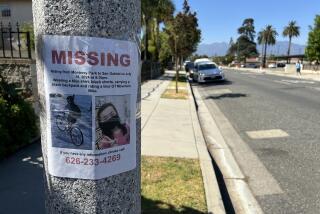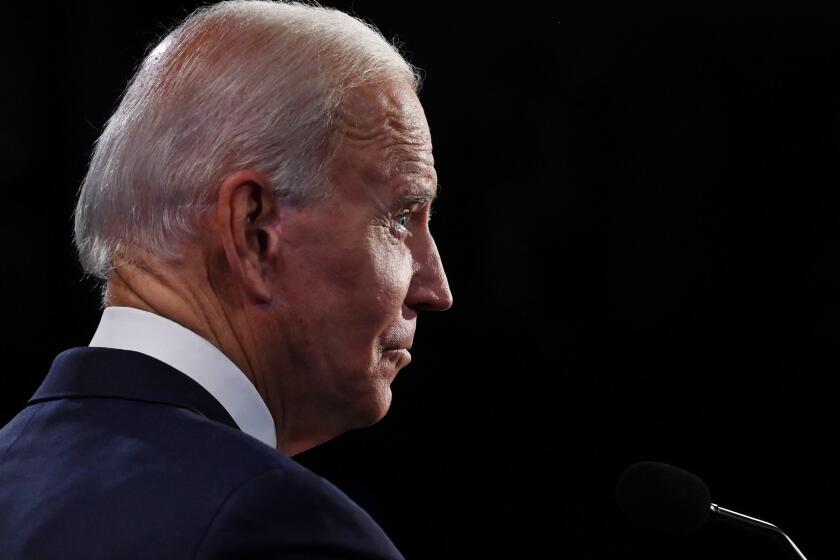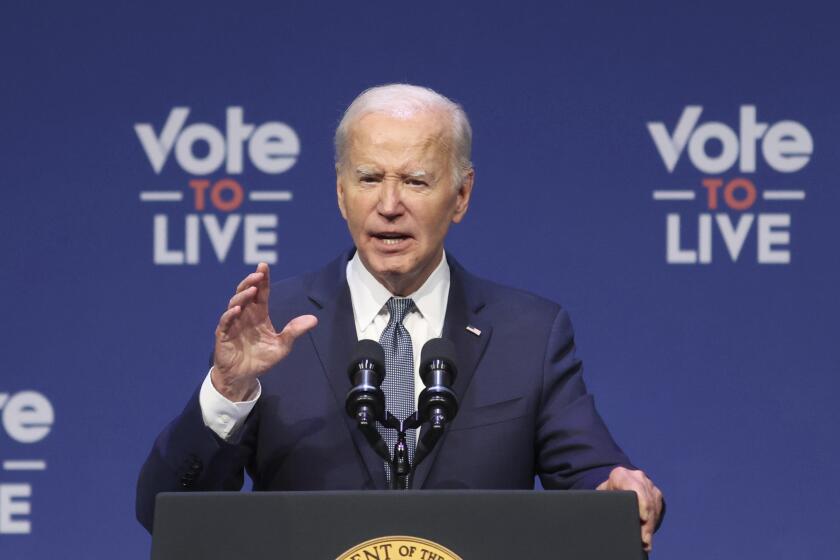PROPOSITION 170: SCHOOL CONSTRUCTION BONDS : We’d Lose Protection for Property Taxpayers : No: California has rightly safeguarded homeowners from taxes voted by those who wouldn’t have to pay.
In 1879, the year Thomas Edison perfected the first practical incandescent lamp, another bright idea was fashioned in California at the state constitutional convention. Delegates adopted a requirement for a two-thirds vote to pass local general-obligation bonds.
Local bonds are paid off by higher property taxes. In effect, property owners must put up their home or property as collateral in case there are insufficient funds to pay the debt to bondholders.
The delegates at the convention believed there should be special protection for property taxpayers, because, as California’s governor warned in 1881, “Not all voters are taxpayers.”
Now, however, if Proposition 170 passes in November, this important taxpayer protection could be lost. Proposition 170 would lower the vote requirement from two-thirds to simple majority for local school-construction bonds.
Not much has changed over the past 115 years to remove the justification for the two-thirds vote to protect property taxpayers. In Los Angeles and San Francisco, under present rent-control laws, general-obligation bond property tax increases cannot easily be passed on to tenants. And even in communities with no rent control, a tax increase cannot reasonably be passed along in today’s market.
If Proposition 170 becomes law, taxes can be raised by a simple majority of voters who will not have to pay them.
The two-thirds vote on general obligation bonds did not hinder California’s phenomenal growth over the past century. That is because it is not impossible to get a two-thirds vote for local bonds. Of the 215 school bonds on ballots between 1986 and 1992, 46% passed. Nearly half. If, however, a majority vote were the law, nine out of 10 would have passed, increasing debt by at least $3 billion.
Passing half the school construction bonds on the ballot may be sufficient, because the projections for the number of students coming into schools each year is exaggerated. An argument is made that 200,000 new students will enter schools each of the next five years. But according to the state Finance Department’s Demographic Research Unit, the largest student increase was about 173,000 in 1989-90. The numbers have dropped since then, with about 88,000 new students in 1991-92, less than half the number projected. Los Angeles Unified recently announced its enrollment would drop this year, for the first time in more than a decade.
There are a number of ways to increase classrooms aside from making a good case and securing the two-thirds vote for local bonds. Seven state bonds have passed over the last five years, adding nearly $6 billion to the school-construction fund. These state bonds require only a majority vote, but that’s appropriate, because they’re paid out of the state general fund. Everybody pays, not just one group of taxpayers.
Alternative ideas for more classroom space have been suggested by the LEARN Facilities Task Force, part of the effort to improve L.A. schools: Revise school-building standards to reflect the different space needs of urban schools; utilize non-academic buildings for academic functions; use available space in vacant commercial structures for classrooms.
Supporters of Proposition 170 argue that the two-thirds vote is undemocratic. This is a democracy, they say--majority rules. The two-thirds vote concept has always been part of our democratic republic; it appears 10 times in the U.S. Constitution. It was designed to give certainty to important decisions: to secure an impeachment, to approve a treaty, to override a presidential veto.
There is no more potent, oft-used power of government than the power to levy taxes. We live in a country that created laws to make it hard for government to take life, liberty and property. Our laws protect the taking of life and liberty with a unanimous vote of a jury. Why shouldn’t a two-thirds vote protect us against taking property in the form of taxes?
Remember, a general-obligation bond is the first lien against property. And bonds are paid off over 20 or 30 years. Unlike a tax increase, which can be voted out the year after it is voted in, the debt from a bond is in place for up to 30 years.
The belief that debt must be restrained became an important part of the 1879 California Constitution. Some supporters of Proposition 170 say the two-thirds vote is an anachronism in an imperfect document.
In 1879, there were critics of the new Constitution. One was Edwin Godkin, a noted liberal of his day, who founded the Nation magazine. Godkin wrote that controls put on debt were one of the few improvements in constitutional provisions in the years since the U.S. Constitution.
This election is not about local control or creating jobs, as some would have you believe. It is about saving an important taxpayer protection that has served us well for more than 100 years.
More to Read
Sign up for Essential California
The most important California stories and recommendations in your inbox every morning.
You may occasionally receive promotional content from the Los Angeles Times.






